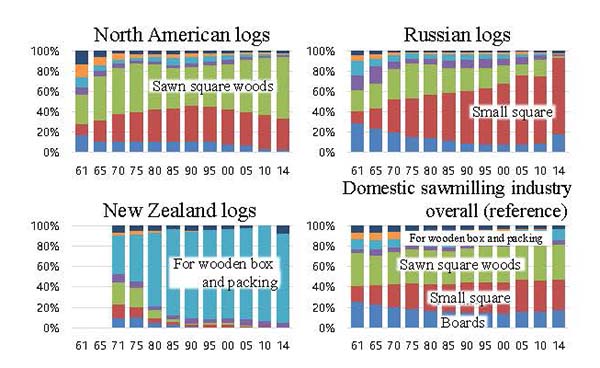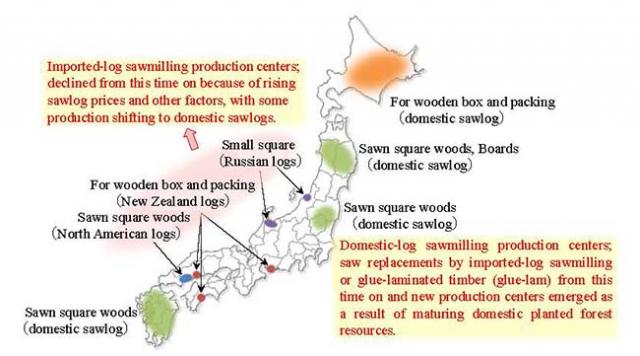Home > Research > Research Results > Research Results 2017 > Sawlog characteristics have greatly affected the direction of development of the sawmilling industry
Update:August 1, 2017
Main content starts here.
Sawlog characteristics have greatly affected the direction of development of the sawmilling industry
| Article title |
The Japanese Sawmilling Industry and Sawlog Demand from the 1960s to the Mid-2010s |
||
|---|---|---|---|
| Author (affiliation) |
Takuya Shimase(a) (a) Hokkaido Research Center, FFPRI, Sapporo, Hokkaido, Japan. |
||
| Publication Journal |
Journal of forest economics, 63(1): 3-14, March 2017 |
||
| Content introduction |
In recent years, the use of domestic sawlogs by Japan’s sawmilling industry has become expanding. This can be considered a welcome trend for Japan’s forestry business, which has suffered from stagnating demand. To obtain a more accurate forecast of how this trend could developed in the future, I reviewed the history of the domestic sawmilling industry, focusing on its sawlog use. When wood imports gained momentum in the 1960s, sawmilling companies started making products (i.e. lumber) for various uses by sawlogs they desired from among the many log (tree) species available throughout the world. However, due to market competition, only those sawmilling companies or lumber production centers that took advantage of the specific traits (characteristics and size) of each log species were able to survive, resulting in a stronger relationship between log species and product use (items) (Figure 1). Furthermore, even among the companies and production centers making products for the same use from the same log species, only the most competitive companies or production centers, by virtue of their large-scale plants and other factors, were able to thrive, so that major production centers became limited to specific sites nationwide for each log species and product items (Figure 2). Since the 2000s, an increase in domestic planted forest resources and difficulties in procurement of imported logs have led to an industry-wide shift toward domestic wood. However, because the aforementioned log species–product use matching had such a major impact on the development of the sawmilling industry and lumber production centers, this shift toward domestic forest resources may also have considerable effect on the structure of the lumber industry. In seeking renewed matching between log species and products, further collaborative efforts by industry, government, and academia to streamline sawlog supply, distribution, and processing, as well as to develop new technologies, are needed so that the use of domestic sawlogs can be expanded to many other fields.
|
||
Copyright © Forest Research and Management Organization. All rights reserved.


